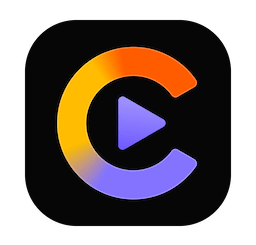VLC Media Player 3.0.20 Crack Plus Registration Key For All Windows
VLC Media Player 3.0.20 Full Crack Activated 32/64 Bit Download [Updated]

VLC Media Player Crack is a highly popular and versatile open-source multimedia player developed by the VideoLAN project. Launched in 2001, it has since gained a large following due to its ability to play almost any media format without the need for additional codecs or plugins. The Video Filters have support for a variety of features, including Deinterlace, Cropping, Image Wall, Image Adjust, Rotate/Mirror, and Logo Overlay. While VLC excels as a simple, user-friendly media player, it also offers a range of advanced features for power users and enthusiasts. Users can customize the player’s appearance with different skins and tweak various settings to suit their preferences.
Vlc Media Player Free Download stands out for its wide range of supported formats, including video formats like MPEG, AVI, MP4, WMV, and audio formats such as MP3, FLAC, AAC, and more. Additionally, it can handle various streaming protocols, including HTTP, RTSP, and MMS, making it a go-to choice for users who want a single player capable of handling diverse media types and sources. Whether you’re watching a DVD, streaming online content, or playing a media file from your local drive, It is often the preferred solution due to its ability to handle virtually any media format thrown at it.
you can visit and free download here: Enigma Recovery Professional Crack
Can VLC play DVDs and Blu-rays?
Yes, VLC Media Player can play DVDs and Blu-ray discs. One of the standout features of Vlc Media Player for Windows 10 is its cross-platform compatibility. It’s available for Windows, macOS, Linux, Android, iOS, and other operating systems, ensuring users can access their media library regardless of the device they’re using. This universal accessibility has contributed significantly to its widespread adoption across various devices and platforms. Additionally, It supports multicast streaming and can act as a server for media streaming to other devices on the network, adding to its utility in various multimedia setups.
Moreover, Vlc Media Player Download 64-bit Windows 10 includes advanced playback options such as frame-by-frame advancement, audio and video filters, equalizers, subtitle synchronization, and support for playback of damaged or incomplete media files. It isn’t just a standalone media player; it’s also a robust tool for streaming media over networks. Users can stream both local and online content, making it a versatile solution for home media centers or streaming from online sources.
Download Vlc Full Crack open-source nature has played a significant role in its development and success. Being open-source means that its source code is freely available for anyone to inspect, modify, and contribute to. This has led to a vibrant community of developers who continually improve and expand it features and compatibility. Furthermore, It open-source foundation ensures transparency and security, as any vulnerabilities can be quickly identified and patched by the community.
unloked the free version of this software: Photopia Director Crack

Key Features:
- It enables you to listen to all of your favorite radio stations and enjoy all forms of media.
- In the event that it is necessary, it is able to fall back on software and enables 0-copy on the GPU.
- The video, subtitle synchronization, video and audio filters, and other features that VLC Media Player cracked APK offers are the most comprehensive of any other program.
- Support for input media includes HTTP/FTP, MMS, TCP/RTP Unicast, File Transfer Protocol (FTP), UDP/RTP Unicast, and UDP/RTP Multicast.
- The DVD Video, the Video CD / VCD, the SVCD, and far more.
- MPEG (ES, PS, TS, PVA, MP3), AVI, ASF / WMV / WMA, MP4 / MOV / 3GP, OGG / OGM / Annodex, Matroska (MKV), Real, and a variety of other formats besides are supported as input formats.
- MPEG-1/2, DIVX (1/2/3), MPEG-4 ASP, DivX 4/5/6, XviD, 3ivX D4, and H.261 are some of the video formats that are supported today.
- Included in this list are H.263 and H.263i, H.264 and MPEG-4 AVC, Cinepak, and Theora.
- A variety of audio formats are supported, including MPEG Layer ½, MP3 (MPEG Layer 3), AAC (MPEG-4 part 3), Vorbis, and others.
- DVDs, text files (MicroDVD, SubRIP, SubViewer, SSA1-5, SAMI, and VPlayer), and Vobsub are all supported with subtitle capabilities.
- These include Universal Subtitle Format (USF), SVCD/CVD, and other formats.
New Updates in VLC Media Player Patch:
- Output For Video
- Fix the green line that appears in fullscreen mode in the video output of D3D11.
- Fix problems that occur with older versions of certain AMD drivers
System Requirements:
- Operating System: Windows 7 or later
- Processor: Intel Pentium 4 or AMD Athlon 64 processor (or equivalent) with SSE2 support
- RAM: 512 MB or more
- Graphics Card: Any DirectX 9 compatible GPU
- Free Disk Space: 150 MB for installation
How To Install VLC Media Player?
- Download the crack file.
- Install the file, then activate the key.
- Copy and paste the Registration Key into the activation box.
- After a few seconds, everything is done.
- Enjoy



